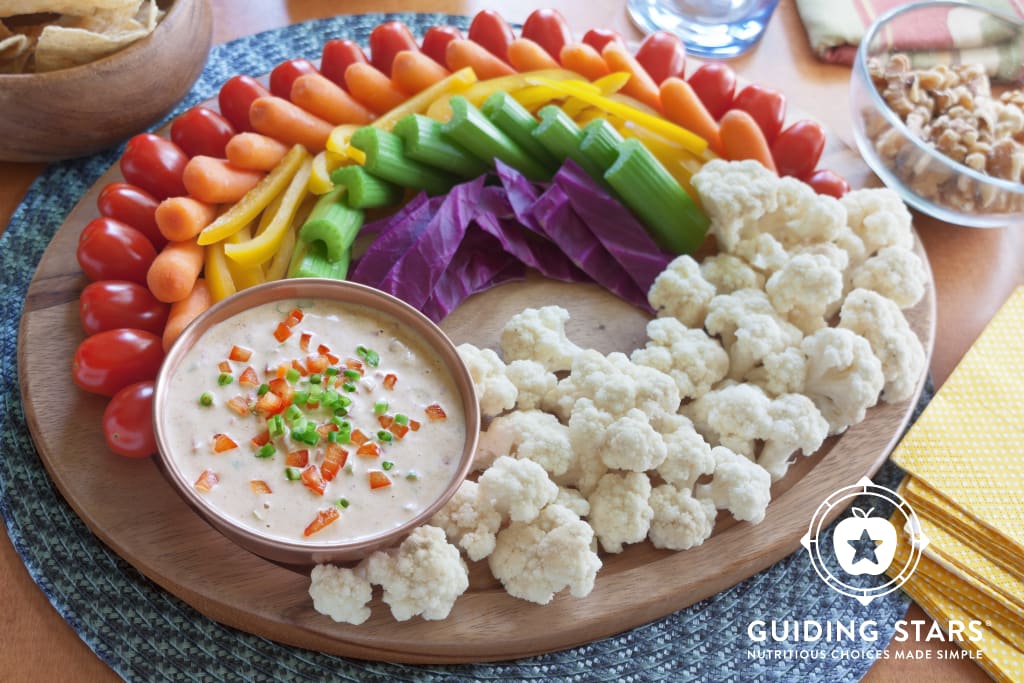
Let’s face it: even though most of us have more produce choices during the summer, we all have our favorites. I’m partial to fresh cherries, nectarines and summer squash. My husband is a watermelon and radish fan. Luckily, my daughter will eat any produce except beets and cantaloupe. Even with all this variety in our house, sometimes it seems like I’m buying the same things every week at the market.
Granted, this is typically more of an issue in the winter months when there is less variety to be found. Still, maybe you’re a creature of habit. Or maybe you just adore certain summer fruits and veggies so much that you find you’re getting the same three or four produce items each week. If you’re ignoring everything else out there, you could easily up your nutrition game by branching out in the produce aisle. And if there ever was a time to do this, it’s summertime! Here are a few ideas for how to dig yourself out of the summer produce rut…..
Focus on color groups.
Choose your produce to diversify color when you can. The nutrients provided by the fruits and veggies in each color group are generally similar, though not identical. For example, foods in the red and purple color group typically contain vitamins C and A, as well as natural plant pigments such as anthocyanins and lycopene. Research suggests that these pigments are associated with heart health and perhaps the prevention of certain cancers. The green group tends to provide folate, vitamin A, and vitamin K.
If it helps to put your produce choices into groups that provide roughly the same nutrients, you could go the color route. Simply switch out one green or red veggie for a different one from the same color group. This list may be helpful for increasing variety within color groups for both fruits and vegetables.
Buy local produce.
Buying locally-grown fruits and vegetables not only helps your local economy and growers, but it can be a way to expand your produce intake. You could challenge yourself to make most of your produce purchases (when seasonally possibly) from a farm stand, farmer’s market, or join a CSA. Community-supported agriculture is a wonderful way to get local, super-fresh produce. You get what’s in season in your area and currently available—so you are compelled to use what they send you! Hey, sometimes you need to “force” yourself to try new things, right?
Trade your garden bounty with neighbors.
Lots of people like to grow veggies and fruit, perhaps more now than ever. I am growing several types of tomatoes, but this year have no zucchini or yellow squash. I’m hoping to trade with a neighbor—an exchange that allows us both more variety and a wider array of nutrients—with no extra cost.
Keep a couple bags of frozen fruits and veggies on hand.
There will be times when you happen to just run out of fresh fruits and veggies. There’s no need to fret, because frozen produce generally earns the same number of Guiding Stars as fresh, meaning it is just as nutritious. It’s also super-convenient. I always keep several bags of frozen vegetables on hand. Our favorites are mixed veggies—great for tossing into rice or grain-based dishes, French-cut green beans, wild blueberries, strawberries, cut corn, and peas. I find that when I have frozen produce on hand, I can always find a way to add it to something else to boost nutrients and color. For example, I always add frozen corn to chili. Oh, and frozen peas added to bean salad—so good!
Bottom line, it’s easy to get into a produce rut. (I’m looking at you bananas, carrots, and bag of basic salad mix!) It is, however, also pretty easy to get out of one. Look around you—there’s a wide world of colorful fruits and veggies out there. Why not take advantage during this prime growing season?